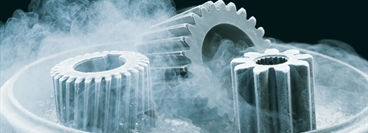Today we will learn about the cryogenic treatment and what is its exact process and various types of processes involved in this treatment. So, stay focused while reading this article.
A cryogenic treatment is a process in which the metal pieces are cooled about cryogenic temperatures in order to eliminate different stresses and improve corrosion resistance of the metal. The cryogenic temperatures are the temperatures below -150º C. This process is one of the heat treatment processes in the metallurgy.

Advantages of the cryogenic treatment
- It makes the process of machining a smoother and an easier process.
- Cryogenic treatment results in increasing the electrical properties of the material.
- It also helps to reduce the resistance of the metal.
Following are the processes involved in this process
Cryogenic Hardening
In cryogenic hardening, material is cooled with the help of the liquid nitrogen at about -185ºC. Currently cryogenic hardening is applied to high-carbon and high-chromium steels. The basic purpose of the cryogenic hardening is to increase the proportion of the martensite in the structure of the steel.
Following are the applications of the cryogenic hardening:
- In Automotive industry: cryogenic hardening is mostly used in case of the applications related to automotive industry.
- Applications in the mechanical industry: It includes different motors, pumps, washers as well as small bolts.
- Musical Industry: Cryogenic hardening is highly used in the musical industry. It is used in making various components of instruments such as strings of the guitar, wires of piano, several cables, amplifiers.
- In sports industry: It is used in making rackets of the tennis, bicycles, different motor cycles, parts of the aircraft, instruments used in fishing and in archery, etc.
- It is mostly used in cutting tools industry for manufacturing cutters, blades, knives, etc. There are two methods of cryogenic hardening based on the cutting tools:
-
- Shallow cryogenic treatment or SCT
- Deep cryogenic treatment or DCT
- Cryogenic hardening is also found its use in the Aerospace and defense sector. It is used in landing systems and control systems.
Also Read:
- What is Quenching Process And Why it is Necessary?
- What is Annealing Process and Why it is done?
- What is Tempering and Its Process?
Cryogenic Deflashing
Cryogenic deflashing is a process of deflashing which is carried out at the cryogenic temperature. In deflashing, a flash is removed from the molded workpieces. In this process, a liquid nitrogen is used in cooling the workpieces. After the cooling process, a process of blasting occurs with the media pellets.
Below are some of the advantages of the cryogenic Deflashing
- You don’t require a huge amount of the money to carry out this process.
- The cryogenic deflashing results in enhancing the life of a mold.
- There is no chance of error during the whole process. Because the cryogenic deflashing is controlled by computers, there is no chance of human error at all.
- This is a non-abrasive process.
Cryogenic deflashing is used in various applications. Following are some of its applications:
- It is used in the preparation of the different gaskets and O-rings. O-ring is similar to the gasket but it is torus in shape.
- Cryogenic deflashing is also has application in the manufacturing of the goggles, face masks, different insulators as well as electronic devices.
It is the most efficient as well as effective technique and the cost of the equipment which is used in this process is very low.
Cryogenic Machining
Cryogenic machining is one of the processes of the cryogenic treatment where liquid nitrogen and compressed carbon dioxide are mainly used. There are many benefits of cryogenic machining like it is useful in increasing the tool life. Also, this process is useful in getting the good surface finish.
Cryogenic Rolling
Cryogenic rolling is sometimes referred as a cryorolling. In this process, the microscopic bulk materials are formed at the cryogenic temperatures. During the formation of microscopic structures plastic deformation is carried out. Following are some of the advantages of the cryogenic rolling:
- The material that has passed through cryogenic rolling has a higher amount of the flow stress.
- Also, the samples that being processed through cryogenic rolling has a higher dissolution rate.
- Cryogenic rolling results in the formation of the expected micro shaped structure.
Cryogenic Deburring
As per the name, cryogenic deburring results in eliminating burrs from metal workpieces. This process is carried out at low temperatures such as -195º C. Such low temperature is achieved by using dry ice, carbon dioxide and liquid nitrogen. Cryogenic deburring is in practice since 1960s. The materials that can be deburred by this process are nylon, Teflon, Poly vinyl chloride (PVC), polycarbonate, Delrin, polypropylene, etc.
So, above is all about the cryogenic treatment processes, their advantages, applications, etc. If you get some knowledge from this article, try to share it maximum!
